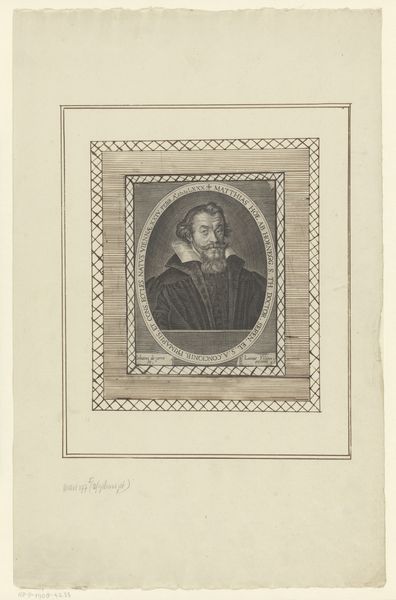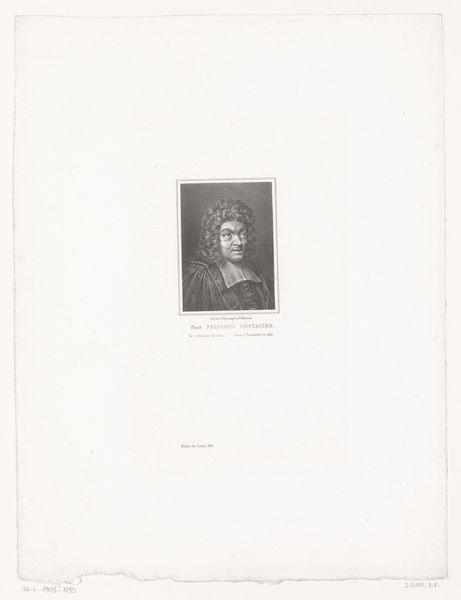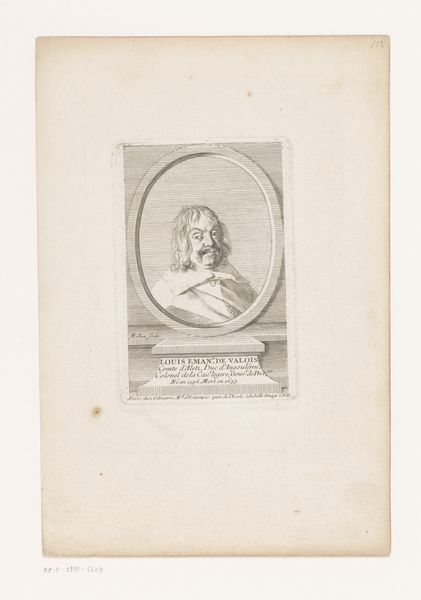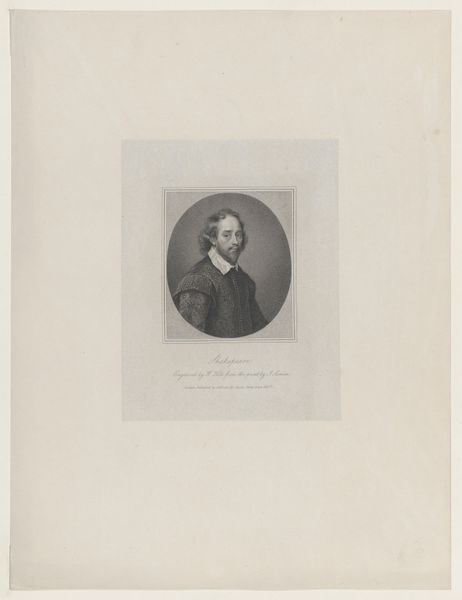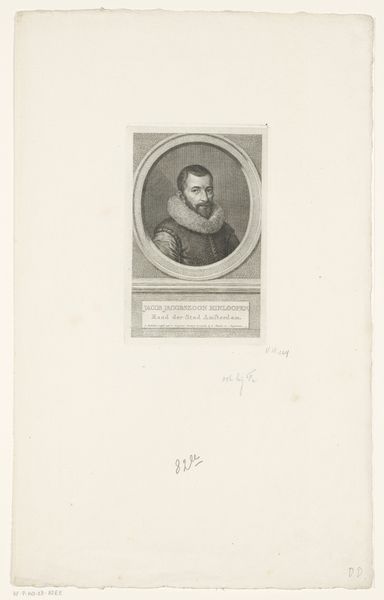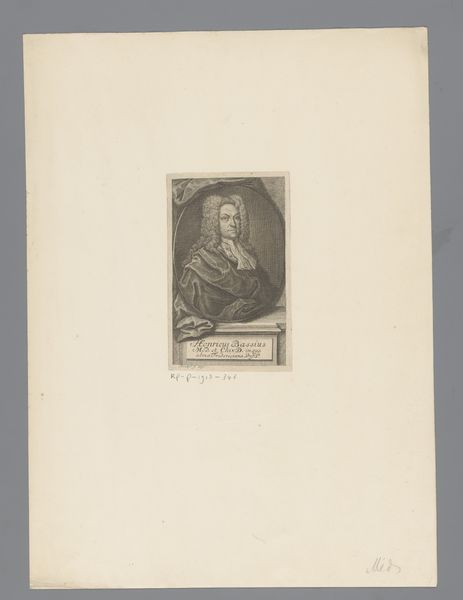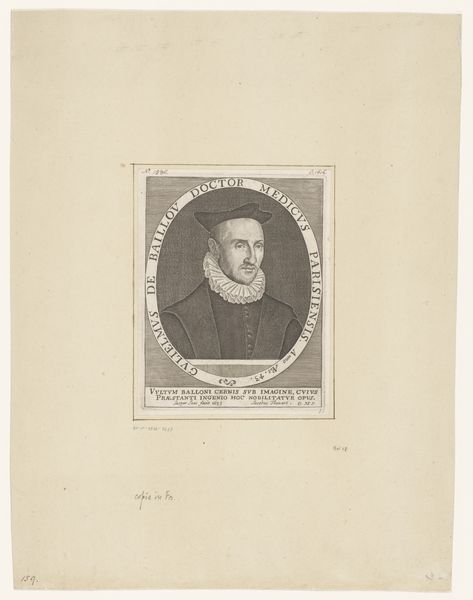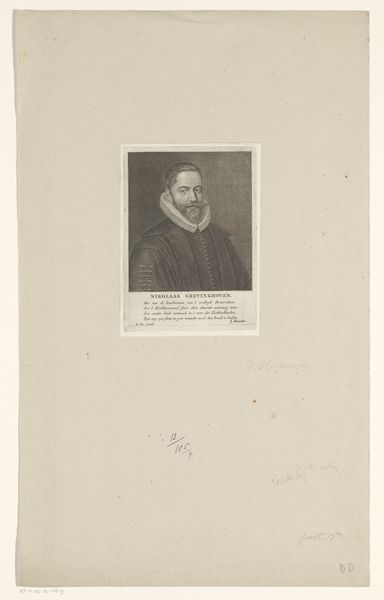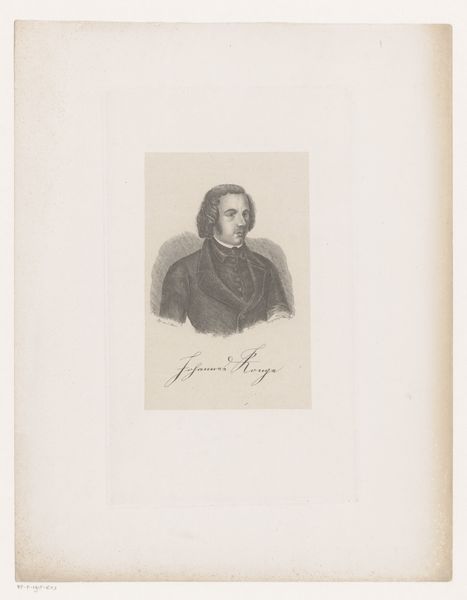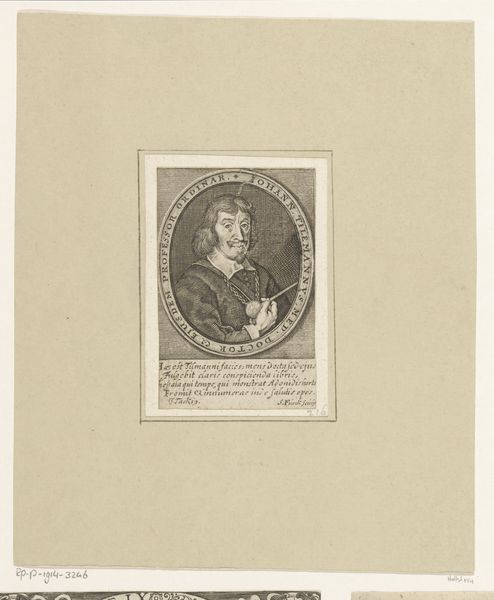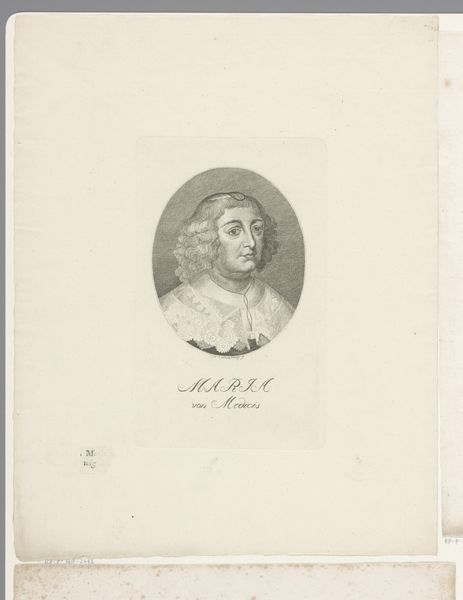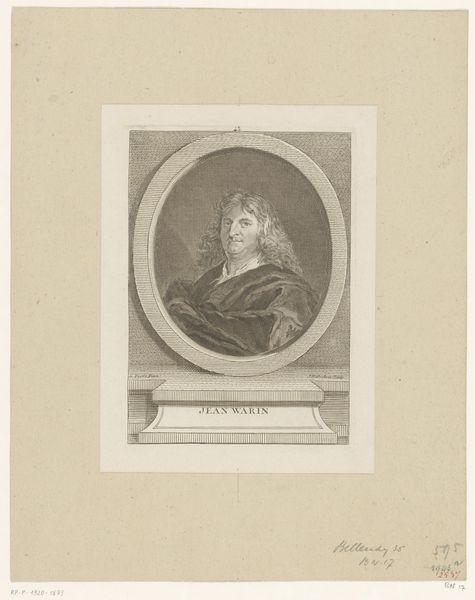
drawing, print, paper, engraving
#
portrait
#
drawing
# print
#
paper
#
coloured pencil
#
watercolour illustration
#
engraving
#
realism
Dimensions: height 201 mm, width 152 mm
Copyright: Rijks Museum: Open Domain
Editor: This is "Portrait of a Man" by Jules Ferdinand Jacquemart, from 1871. It seems to be a print or engraving on paper. The man's expression is quite stern, but there’s also something thoughtful in his eyes. What stands out to you about this portrait? Curator: The sternness you see is a reflection of a changing era grappling with evolving notions of identity. What appears as a firm gaze to us might, to viewers then, have suggested steadfastness and moral character. The circular frame acts as a window, but also like a symbolic halo – an evocation of an idealized past clashing with the disquiet of the present. Does the limited colour palette perhaps enhance this effect for you? Editor: Yes, the monochrome definitely adds to that serious, historical feel. The limited shading, although precise, makes the portrait seem more like a representation than an attempt at true likeness. I am curious, how did viewers interpret images differently then, compared to today? Curator: Back then, portraits were crucial for immortalizing individuals and conveying status, so the slightest visual element could be imbued with significance, a secret language. Consider the man's clothing: the dark coat and the crisp white collar speak of bourgeois respectability. What emotional or psychological resonances do you discern beyond the initial impression? Is there perhaps a tension in the face? Editor: I think the slight upward tilt of his chin projects self-assurance, yet the furrowed brow might betray some inner worry or skepticism. So, the portrait becomes not just about status, but perhaps the subject’s internal conflicts too. Curator: Exactly. It reminds us how artistic choices – whether conscious or subconscious – transmit layered cultural meanings that viewers then and now actively decipher, thus extending memory forward in time. Editor: I hadn't considered the way we're both engaging with historical codes. Thanks to your insights, I now recognize far more in the image! Curator: Likewise, your thoughtful observation deepened my appreciation for how images persist as ever-evolving repositories of meaning.
Comments
No comments
Be the first to comment and join the conversation on the ultimate creative platform.
